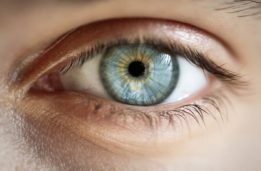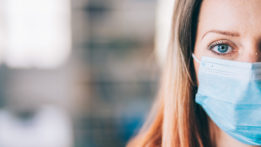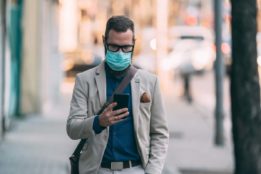Protecting Your Eyes During the Coronavirus Pandemic
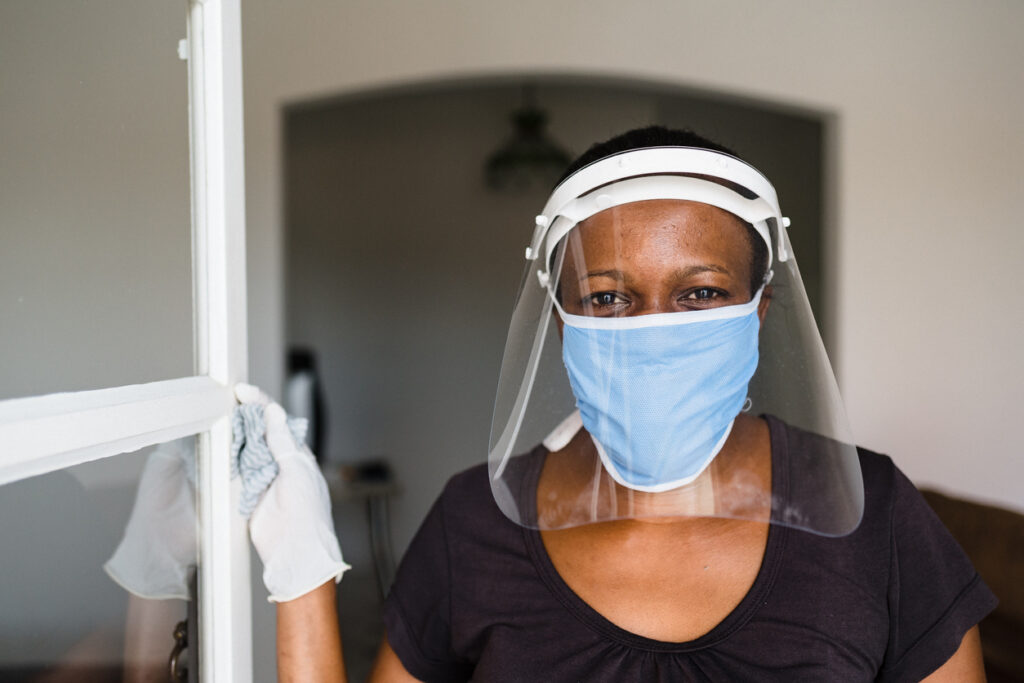
The science around COVID-19 – a.k.a coronavirus – is developing rapidly. As more is learned about the transmission of the virus, new and updated recommendations have come out on what people can do to help protect themselves and others from the disease. Recently, the question as to whether you can catch coronavirus through your eyes has come up for debate. Doctors say the risk is relatively low, but there is no reason not to take steps to protect yourself as much as possible. Here is an overview of what we know now about the transmission of coronavirus through the eyes and what you can do to protect yourself.
First, the virus enters the body through the mucosal tissues – which is any part of the body that secretes mucus. Most of the time, we think of our nose and sinuses when it comes to mucus, but the back of the mouth and even the eyes also create mucus. And mucus is important because it is one of the ways the body stops pathogens and dirt from getting into your body and causing havoc. Unfortunately, and particularly in the case of COVID-19, the mucosal system isn’t foolproof.
Emerging Support for Protecting your Eyes: Goggles and Face Shields
Because their anatomy includes mucosal tissue, there is the potential for the virus to enter through the eyes. In fact, early in the pandemic, there were reports of patients presenting with conjunctivitis – or “Pink Eye” – related to coronavirus infection. Recently, infectious disease experts began recommending ways to protect the eyes as part of the overall strategy to reduce the risk of infection. Wearing a face shield or goggles creates a barrier to virus-carrying droplets. Think of them as a window between you and the rain – you can see it, but you don’t get wet from it.
Face shields and goggles offer some protection for those who wear them. Importantly, they help prevent you from touching your eyes. However, masks are still strongly recommended to help limit transmission.
Wear A Mask When Out in Public
Masks slow and limit the spread of the virus – pure and simple. With a couple of notable exceptions, basic face coverings help to trap the air you breathe out, which contains droplets of moisture that may contain viruses. So, in case you are infected with coronavirus, wearing a mask helps to keep those germs to yourself rather than spreading them around to others.
But what if you don’t have the coronavirus? Well, how do you know? Research shows up to 40 percent of those infected with the coronavirus don’t have symptoms. This means, without having been tested to show otherwise, you could have the virus and not know it. The primary purpose of wearing a mask is to protect others.
Updated Recommendations About Masks
Recently Duke University did a study on the different types of face-coverings that are most popular and tested their ability to reduce “droplet emissions” to help reduce or prevent the transmission of the virus. A few key findings:
- N95 mask was most effective in reducing droplet emissions. Because of their limited supply, N95 masks should be reserved for healthcare workers.
- Three-layer surgical masks and masks made with a combination of cotton and polypropylene (a synthetic, non-woven fabric that acts like a filter) were the next best performers in the study.
- Two-layer cotton, pleated-style masks performed better than other types of masks, including a one-layer cotton mask and a knitted mask.
- The worst performing face coverings were bandanas and, interestingly, the popular neck gaiters, which were worse than not wearing a mask at all. Neck gaiters increased the droplet transmission – making them a poor choice for a face covering.
Ways to Protect Yourself from Coronavirus
- Wash your hands. Particularly after being outside or touching surfaces. 20 seconds, warm water, and dry with a clean towel.
- Keep from touching your face. This makes sense since this is where your most exposed mucosal tissues reside.
- Maintain social distance – a minimum of 6 feet, but more is better – when out in public.
- Unless absolutely necessary, don’t go to crowded areas, gatherings, or other parties.
- Wear a mask when out in public.
Don’t Avoid Your Eye Care
Now is not the time to ignore issues with your eyes or vision. If you are having symptoms or you are due for a checkup or annual eye exam, call your eye doctor and make an appointment. Medical practices are open and adhering to CDC guidance to keep you safe while taking care of your eye health. For those who deal with vision issues, it is more important than ever to stay on top of your eyewear hygiene. A few reminders:
- For glasses, gently but thoroughly wash frames with soap and water or an eyeglass cleaner with disinfecting ingredients. This is particularly important after being out in public. Be sure your hands are clean – even a squirt of hand sanitizer helps – before touching or adjusting your glasses.
- Contact lens wearers should always be diligent about maintaining their gear. Making sure hands are freshly washed before and after touching your eyes is essential. Keep contact lens cases clean by rinsing with contact lens solution. Using fresh solution, wearing contacts for an appropriate length of time, and not sleeping in contacts are also important. The CDC has good information to help refresh your healthy contact lens care routine.
There has been a resurgence of interest in laser vision correction in response to the coronavirus pandemic as people with glasses and contacts deal with their specific struggles. We are here to help you make an informed decision with information about laser vision correction options, what makes a good candidate for a procedure, how to choose a surgeon, and find a surgeon near you.
Bottomline, don’t touch your eyes.

